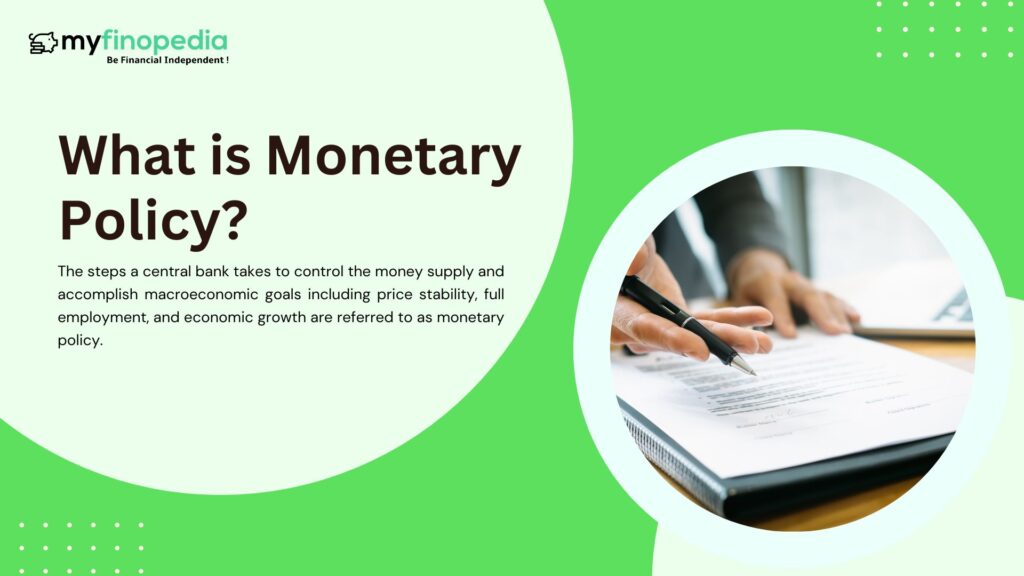The steps a central bank takes to control the money supply and accomplish macroeconomic goals including price stability, full employment, and economic growth are referred to as monetary policy. The primary duties of the Reserve Bank of India’s Monetary Policy is to carry out monetary policy in order to affect interest rates, credit availability, and economic activity in general.
WHAT DOES IT MEAN?
To control economic factors like inflation, unemployment, and economic growth, monetary policy entails controlling the money supply and interest rates. It functions in tandem with fiscal policy, which controls taxation and spending by the government.
WHAT ARE ITS TYPE?
Expansionary and contractionary monetary policies are the two primary categories.
- The goal of expansionary monetary policy is to boost economic growth by reducing interest rates and expanding the money supply.
- Conversely, contractionary monetary policy aims to reduce inflation and slow down economic growth by boosting interest rates and reducing the money supply.
Objectives:
MAIN GOALS OF THE POLICY?
- Price stability is the process of keeping inflation under control and stable in order to maintain the purchasing power of money.
- Encouraging the economy to reach its greatest sustainable employment levels is known as full employment.
- Economic growth is the process of creating the conditions necessary for long-term, steady economic growth.
TOOLS REQUIRED TO CARRY OUT THE POLICY?
- Open market operations: Purchasing and disposing of government assets to affect interest rates and the amount of money in circulation. The interest rate at which commercial banks borrow reserves from the central bank, which has an impact on interest rates generally, is known as the discount rate.
- Reserve requirements: Requiring banks to retain a certain percentage of their deposits as reserves, which has an impact on their capacity to lend. Providing future policy intentions in order to affect market expectations and behaviour is known as forward guidance.
- Buying long-term securities to cut long-term interest rates and encourage borrowing and investment is known as quantitative easing.
In conclusion, monetary policy is an essential tool that RBI use to control economic factors, accomplish policy objectives, and stabilize the economy using a variety of approaches, objectives, and instruments.






